

/en/word2000/tables/content/
In the previous lesson, you learned to enter text into tables. In this lesson, you'll learn to format text in tables, modify table structure, use Autoformat, and add borders and shading.
Whatever you do to format text in a paragraph (make it bold green, for example), you can do to text in a table cell. Use the Formatting menu, the Tables and Borders toolbar, or keyboard shortcuts to format text in a table.
![]() To view the Tables and Borders toolbar, Choose View
To view the Tables and Borders toolbar, Choose View![]() Toolbars
Toolbars ![]() Tables and Borders.
Tables and Borders.
![]() The tables and borders toolbar provides more formatting options for you to choose from.
The tables and borders toolbar provides more formatting options for you to choose from.

![]() Once you've built a table, click an option once to place text exactly where you want it in a cell. You can also change text position once you've entered all of your information by selecting the text you want to change.
Once you've built a table, click an option once to place text exactly where you want it in a cell. You can also change text position once you've entered all of your information by selecting the text you want to change.
Have you ever seen a flyer advertising something with tear-away name and phone number tabs? To create that same effect, use Word's text direction feature. You can rotate text so it runs vertically, facing either the right or the left.
![]() The insertion point rotates when entering horizontal text, but editing vertical text is no different from editing horizontal text.
The insertion point rotates when entering horizontal text, but editing vertical text is no different from editing horizontal text.
While it's easier to enter the exact number of rows and columns when you create a table, you will find that you may need to add or delete a row or column as you're working.

 Insert
Insert Rows above OR Rows below.
Rows above OR Rows below.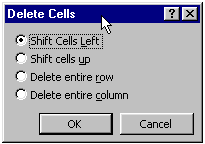
You may need to adjust the size of columns and cells.
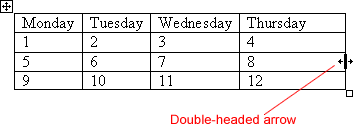
![]() To automatically adjust the size, Choose Table
To automatically adjust the size, Choose Table![]() AutoFit
AutoFit![]() AutoFit to Contents.
AutoFit to Contents.
If you like using Word's style templates to format your work, AutoFormat provides several formats you can apply easily.
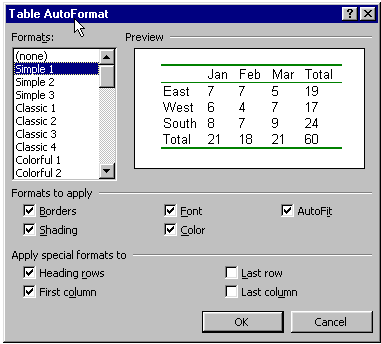
If you want to give your table your own decorative touch, you can adjust AutoFormats using the check boxes in the AutoFormats dialog box or start with a clean slate.
To start from scratch, create a table and open the Tables and Borders toolbar by choosing View![]() Toolbars
Toolbars![]() Tables and Borders.
Tables and Borders.

The line style, line weight, and border color buttons all format table cell borders.
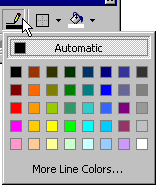
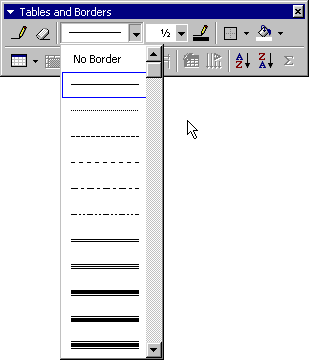

The Tables and Borders dialog box's features are not limited to tables. You can apply these features to any block of text in a word document. Try it.
/en/word2000/drawing-objects/content/